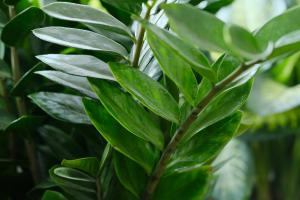Introduction
Plants require water for their survival as it is essential for various biochemical processes such as photosynthesis, respiration, and transpiration. Although water is necessary, it is equally important to consider the quality of water that is being used to nurture the plant. Fresh rainwater, which is free from any added chemicals or pollutants, has proven to be a better source of water for plants as compared to other available sources. In this article, we will discuss why plants grow better with fresh rainwater.
The Composition of Rainwater
Rainwater is composed of pure hydrogen and oxygen, making it free from any inorganic compounds that can cause mineral buildup, such as calcium and magnesium. This allows for a healthier uptake of nutrients by the plants, leading to better and healthier growth in the long run. Additionally, rainwater contains dissolved gases such as oxygen, nitrogen, and carbon dioxide, which facilitates better respiration in plants as compared to stagnant water.
The pH of Rainwater
The pH of rainwater is slightly acidic, with a pH range of 5.0-5.5. This acidic nature helps to break down organic matter, making it easier for the plants to absorb essential nutrients such as nitrogen, potassium, and phosphorus. In contrast, other sources of water such as tap water, which can have a pH range of 7.0-8.5 due to added chemicals, can negatively impact the soil pH, leading to poorer plant growth, and reduced uptake of necessary nutrients.
Free from Chemicals and Pollutants
Rainwater is free from any added chemicals such as chlorine and fluoride that are commonly found in other water sources. These chemicals can be harmful to plant growth as they can negatively affect the microbial activity in the soil, leading to an unhealthy soil environment. Additionally, rainwater is free from pollutants such as heavy metals and pesticides that can contaminate other sources of water, further hindering plant growth.
Cost-Effective Solution
Another benefit of rainwater is its cost-effectiveness. Unlike treated tap water, rainwater is freely available and does not require further treatment or filtration before use. It is a natural source of water that can be easily collected using a rainwater harvesting system, reducing dependence on traditional water sources and providing an eco-friendly solution for plant growth.
Conclusion
In conclusion, fresh rainwater is a better source of water for plants due to its composition, pH, and lack of pollutants and chemicals as compared to other water sources. When used correctly, it can lead to better plant growth and health, reducing the need for additional fertilizers and other growth-promoting chemicals. Rainwater harvesting can be a sustainable solution to provide plants with the essential water they need to thrive, benefitting both the environment and the world of agriculture.

 how many times do yo...
how many times do yo... how many planted tre...
how many planted tre... how many pine trees ...
how many pine trees ... how many pecan trees...
how many pecan trees... how many plants comp...
how many plants comp... how many plants can ...
how many plants can ... how many plants and ...
how many plants and ... how many pepper plan...
how many pepper plan...































